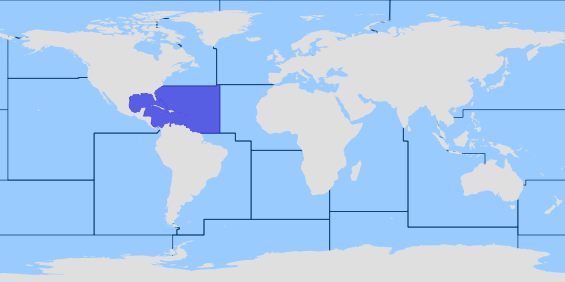angielskiThis species has no thorns nor enlarged denticles on the mean dorsal line. The dermal denticles has 4 keels extending posteriorly, its widest base, approximately twice its length. Dorsal fins are very different in size, shape and area, with their base about half their height. Nasal lobes are simple and similar in length; the first and last are spatula-like in shape; the central part irregularly quadrangular. its edge with several lobes. General body color is dark brown at the dorsal surface, ocelli absent, but with 2 distinct round black spots on the upper edge of the pectoral fins and with irregular, scattered whitish spots. Each side of jaws with 8 triangular, non-serrated, and straight teeth, the upper with 2 functional series, the lower with only one (Ref. 74686).
Zobacz tłumaczenie
Przetłumaczone z angielski przez BING
Niniejsze tłumaczenie ma charakter czysto wskazujący: z uwagi na ograniczoną jakość tekstu źródłowego, opisy morfologiczne są dostępne tylko w języku angielskim w wersji beta systemu. Informacje w innych językach zostaną udostępnione w kolejnych wersjach.
polskiGatunek ten ma nie cierni ani rozszerzonej guzków na średniej linii grzbietowej. Guzków skórnych ma 4 stępki ku tyłowi, rozszerzenie jego najszersze podstawy, około dwa razy jego długość. Płetwy grzbietowe są bardzo różne w rozmiar, kształt i powierzchnia, z ich bazy około połowie ich wysokości. Płatków nosa są proste i podobnej długości; pierwszy i ostatni są łopatki, jak w kształcie; centralnej części nieregularnie czworokątny. jej krawędź z kilka płatów. Kolor ciała jest ciemny brąz na powierzchni grzbietowej, ocelli nieobecny, ale z 2 odrębne okrągłe czarne plamy na górnej krawędzi płetw piersiowych i nieregularne, rozproszone białawe plamy. Każdej stronie szczęki z 8 trójkątne, -ząbkowane i proste zęby, górnym 2 Seria funkcjonalne, dolnej z tylko jednym (Ref. 74686).
 Obraz niedostępny
Obraz niedostępny